By Arlene Pang
… be true to the mission of bringing out the best in our students…
… be exemplary in the discharge of our duties…
… guide our students…
… continue to learn and pass on the love of learning…
… win the trust, support and cooperation of parents and the community…”
The Teachers’ Pledge is recited by every student teacher in Singapore on graduation day as a commitment to the hard and heart work of teaching. Five short statements together exemplify the spirit of teaching and the good work of a teacher—work that is ethical, excellent and engaging.
It is easy to define and recognize good work, but what are some of its enablers, the factors that allow it to happen? Reflecting on my experiences and observations as an educator, I have identified several key factors that have supported and sustained me in my attempts to fulfil my commitment to the profession. Other than the first, these did not exist in the beginning of my career—instead, they came into play as new developments and milestones emerged, and as the nature of my work, my roles, and my responsibilities evolved over time.
1. Personal Beliefs, Values, and Sense of Mission
An orange starfish in the sand
A story is told of a man walking along a beach, its entire length strewn with starfish washed up from a recent storm. He encounters a boy picking up the starfish one by one and tossing them back into the ocean. When queried, the boy explains that he is helping the starfish who are unable to return to the ocean on their own. If they remain on the beach, the heat of the sun would dry them out and the starfish would perish. The man remarks that, given the multitude of starfish on the beach, the boy would not be able to save all of them to make much of a difference. Undeterred, the boy picks up another starfish, tosses it back into the ocean and replies, “It made a difference to that one.”
Many of us begin our careers with the Starfish Story in our minds, believing that we can “make a difference” by saving one student at a time. Driven by this sense of mission, I spared no effort to do what I believed would make a difference: persevered in teaching a class that was failing badly; organized after-school study sessions and conducted extra classes; wrote motivational cards to students; ran consecutive camps and overseas trips; and made house visits. I observed the positive outcomes of my efforts on the students and was spurred on to do more. I enjoyed the work and experienced flow. Overall, it was work that was definitely ethical, excellent and engaging.
However, as the number of competing commitments and the level of expectations on me as a teacher increased over time, it became harder and harder to rely on personal beliefs, values, and motivations alone to sustain good work. As a programme coordinator, I was more driven by targets and awards that the school could win rather than by a sense of mission and calling. I started to measure success based on the number of targets I achieved and exceeded, rather than on the impact of my work on my students. I was engaged and motivated to do excellent work but for the wrong reasons. At the same time, I was running short on my own resources to sustain the work—physical, psychological, emotional and social resources—and I would have given up, had the next factor not come into play.
2. Positive Mentorship
Amidst my frustrations, support came in the form of a mentor—a more experienced colleague who offered (sometimes unsolicited but appreciated) counsel and advice. More importantly, my mentor had no reservations in correcting me (sometimes harshly) to bring my focus back to my sense of purpose as an educator whenever I seemed to stray from the path. Both of us have moved on to different schools, but the mentoring continues. When my morale is low, or when situations at work arise and decisions need to be made, I know I have an encourager, sounding board, and moral compass to keep me moving in the right direction and to help me decide on the best possible course of action.
3. Sense of Belonging and Responsibility to the Profession
For a long time, teachers were confined to thinking about work only in our own classrooms, departments, and committees. A turning point for me as a teacher was when I received a binder from the Academy of Singapore Teachers six years ago with the words “Ethos of the Teaching Profession” embossed in silver on its white cover. A sense of delight passed through me as I read the documents inside, which articulated the shared beliefs and professional pride of Singaporean educators—placing the child at the center of what we do, honoring the profession, pursuing professional excellence, educating the child within our unique national context and valuing parents and the community as partners in education. The Ethos provided a common language and a shared point of reference for decision making, especially in the face of ethical dilemmas. No longer was teaching about “me and my beliefs”—it was now about “our beliefs as educators in Singapore.”
Coincidentally, before leaving for my post-graduate studies in HGSE, I was posted to do a short stint in the Ministry of Education and placed in a work team that focused on engaging educators in conversations on professionalism and on our shared Ethos. Good work had taken on a new dimension. I noticed in conversations how teachers frequently referred to the shared beliefs and used them to guide their decision-making processes. The attitude had shifted from “me as a teacher and the good work I do” to “us as a body of professionals and the good work we do.” My sense of responsibility to the profession heightened as I saw news stories about how the (un)professional misdeeds of a small group of educators (e.g. forgery of answer scripts, embezzlement of school funds and sexual misconduct by educators) could cause public disregard for the overall profession. In HGSE, I took Howard Gardner’s Good Work course, which provided me with the “3 Es of Good Work” framework (excellence, engagement, and ethics) to think about the work that is done in schools and how, upon completion of my studies, I could and would do good work as a teacher again.
4. Realization of Personal Influence
My appointment as a middle manager in recent years provided me with another perspective on good work. Adjusting to the demands of my portfolio and trying to keep school programmes afloat (note: not thriving, as I would have preferred as an indicator of excellence), I lamented the lack of support and resources given to me to do my work well. Then a realization hit me—while I wished for the outside support and resources to do good work, what was I doing in the capacity of my management appointment to support the efforts of others to do good work?
Hence, my understanding of doing good work as a middle manager was transformed: good work was not just about delivering strong school programmes but also about developing and supporting others so that good work becomes pervasive in schools. This realization added a new dimension to my conception of good work—in addition to bringing about personal satisfaction, good work could be spread and multiplied in others as well!
Good work does not happen by chance. Knowing that these are some factors that enable good work to happen, what can we do as educators to remain committed to the work on an individual level and as a community? As I begin what is hopefully my next decade as an educator, here are some things I will strive to do on a personal level and that fellow educators could consider undertaking as well:
1. Preserve my personal sense of mission by staying connected to the profession at multiple levels—other than within the school, through professional networks and professional learning communities where there is a shared sense of mission.
2. Continue to be mentored and intentionally mentor others, and in doing so, help others to plug in to the wider teaching community.
3. Take initiative not just in asking for support and resources but also in providing these for others.













